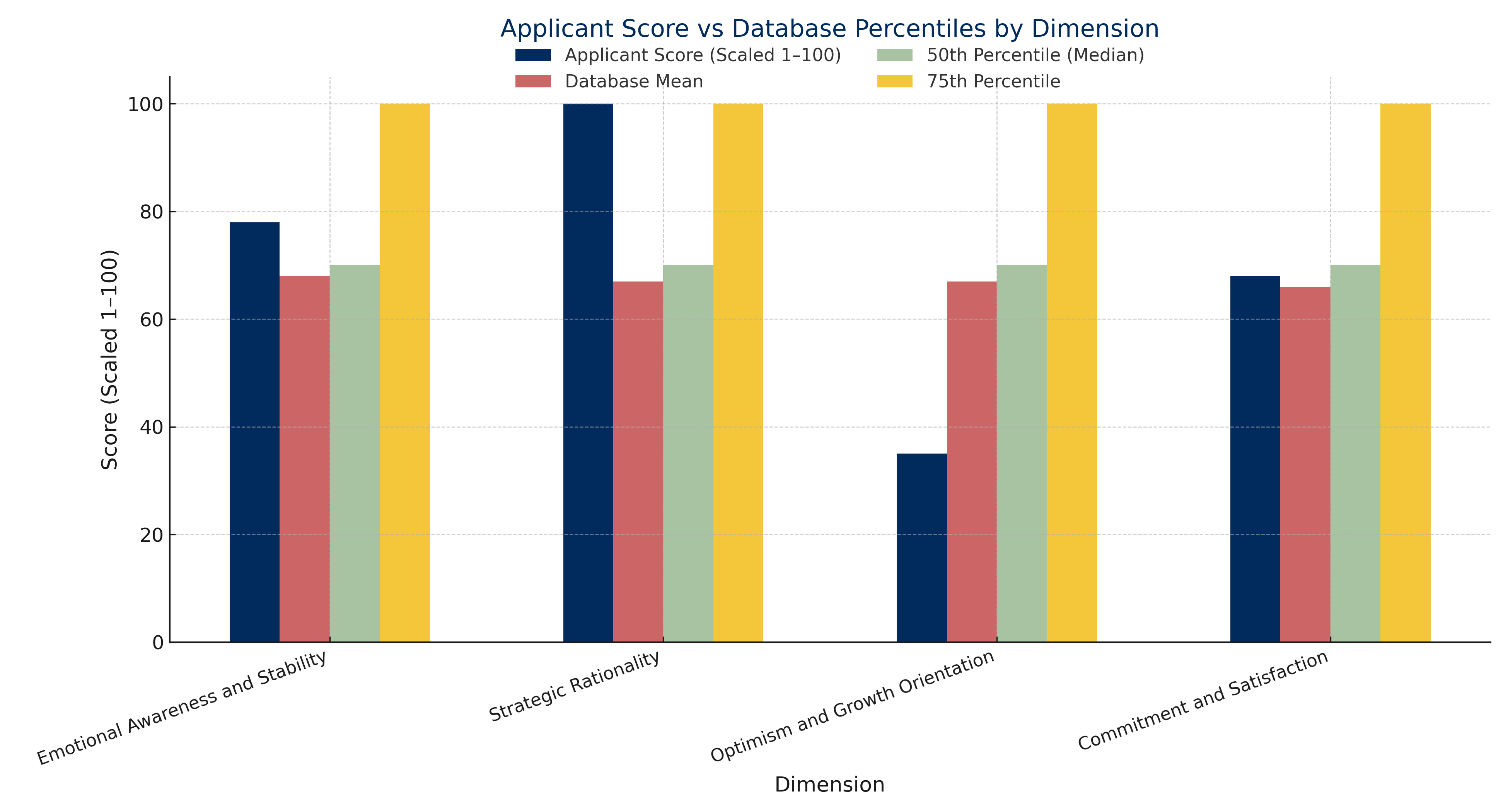Strategic Hiring and Leadership Performance
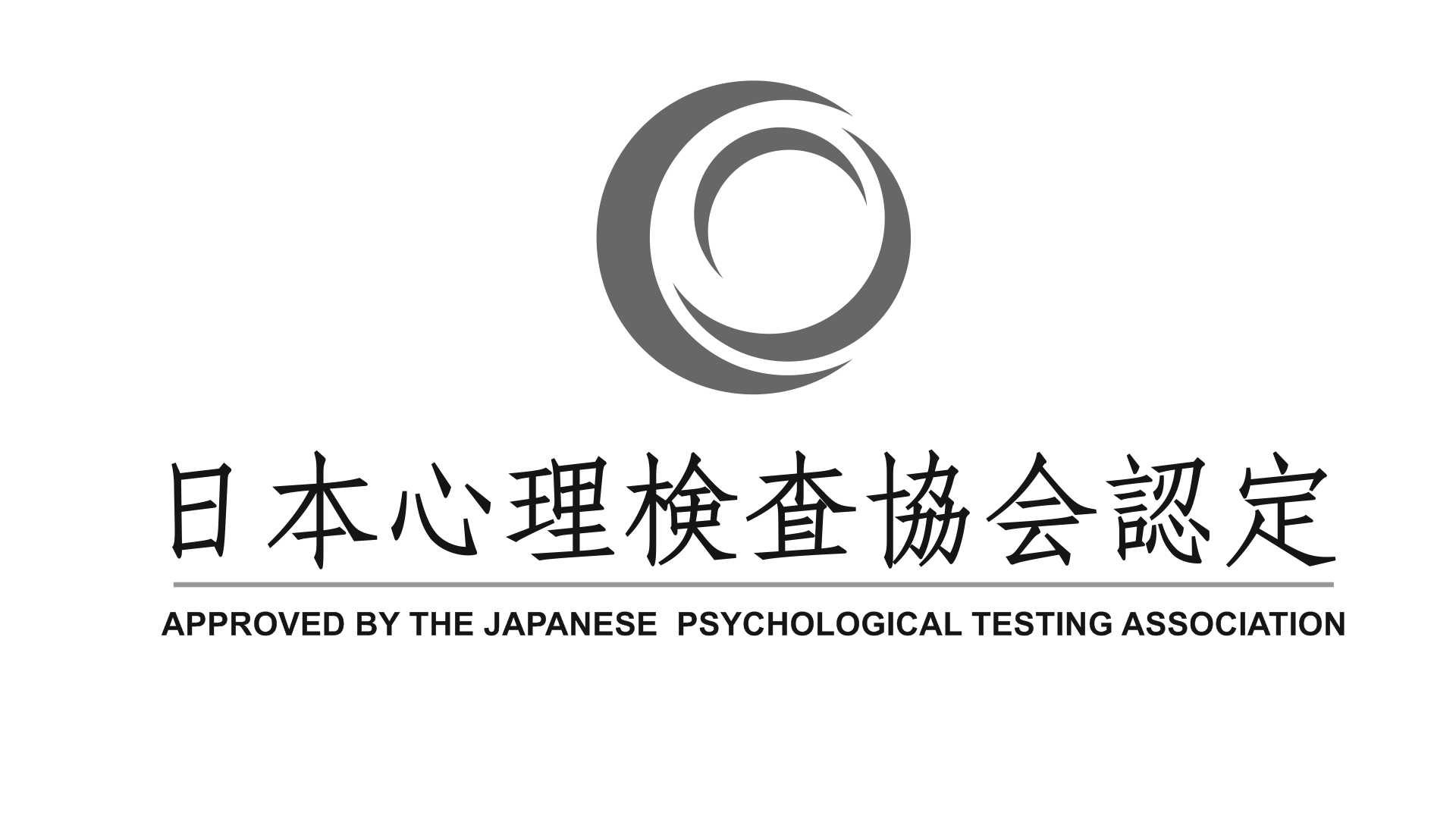
Validated science. Trusted results. Instant insight.
Where else can you find a company that hired about 500 people and made only two mishires? Those that are using the J-PMC EQS hiring system. J-PMC delivers the only independently accredited EQ-based assessment platform in the world, approved by the Japanese Psychological Testing Association. The EQS is available online in multiple languages, takes only eight minutes to complete, and provides immediate results that identify, predict, and develop workforce performance.
This chart isn’t just theory. It is JPMC’s Hiring Science, one of many successful outcomes of a multinational company’s hiring campaign powered by the EQS. In a short eight-minute online survey, the EQS isolated candidates most likely to excel, and the results speak for themselves: over 84% went on to deliver top-tier performance. The few who didn’t deliver, less than 16% in total, prove how precisely the EQS hones in on top talent.
What once took weeks and weeks of interviews and guesswork is now a short, data-driven process that reveals, with impressive scientific accuracy, who will thrive. This company didn’t just hire faster, they hired right. Read on for how JPMC’s science redefines hiring beyond the games of personality testing.
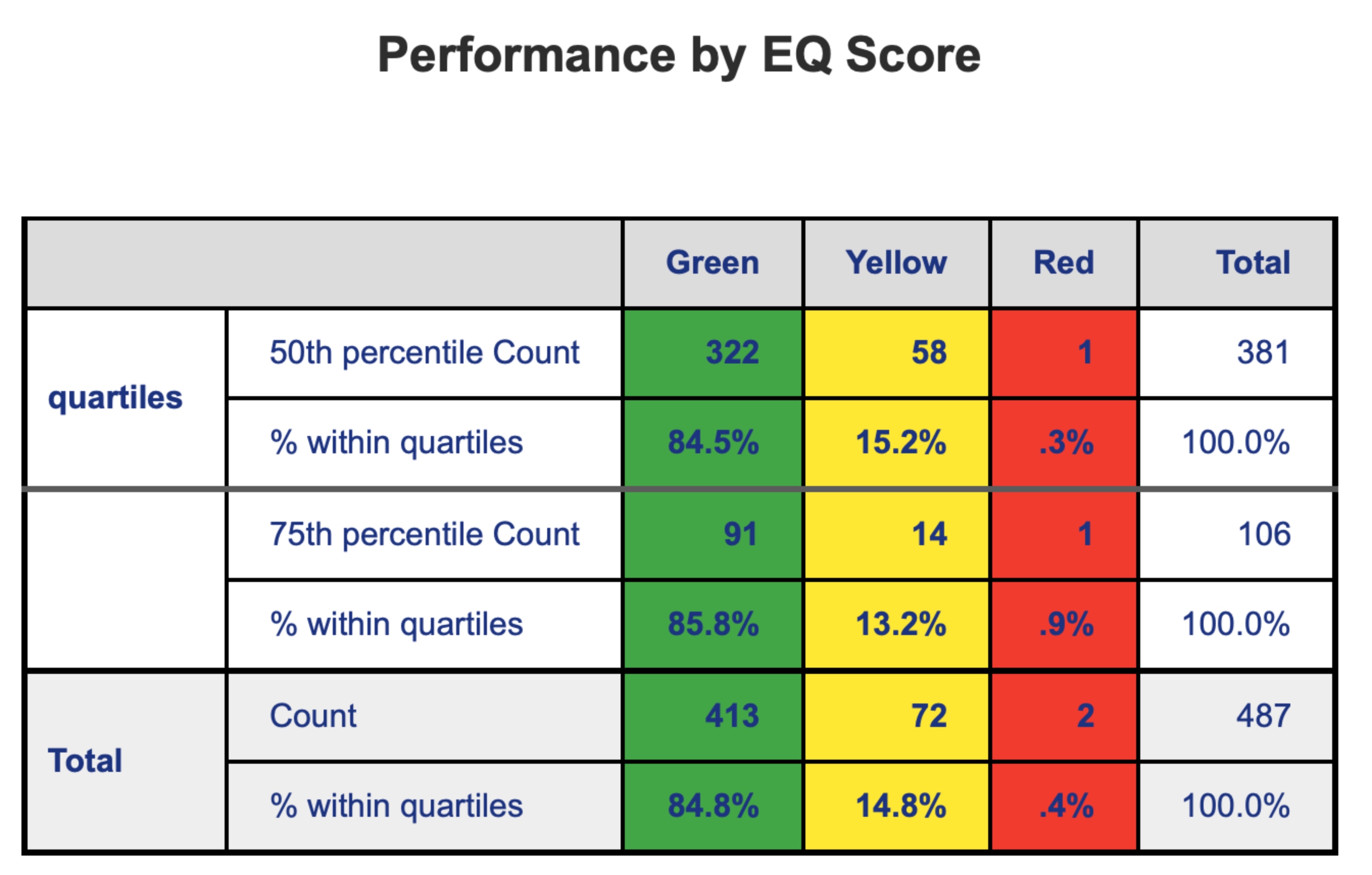
Managers are overloaded, and hundreds of resumes reveal little about how people actually perform. Multiple interviews, exhausting for both managers and candidates, rely on impressions, not evidence. And impressions predict success only 9% of the time.
J-PMC EQ analytics quantify how candidates sustain performance, react under stress, thrive under pressure, and refuse to quit — all at the trait level.
Each result produces a Fit Score — a statistically derived index of alignment between the person, the role, the division, and the company. It’s not an “impression” of fit (which is correct less than 0.05% of the time), but a measurable prediction of success.
Predictive accuracy averages 78–100% across teams, with R² values up to 0.93, meaning performance outcomes can be forecast with up to 93% precision. By comparison, traditional methods — resumes, screeners, and multiple interviews — average just 7%.
Used today by multi-division, banking, lending, and wealth-management teams, EQS prediction transforms hiring from a feeling into a forecast. See how your next hire will perform. Before you hire.
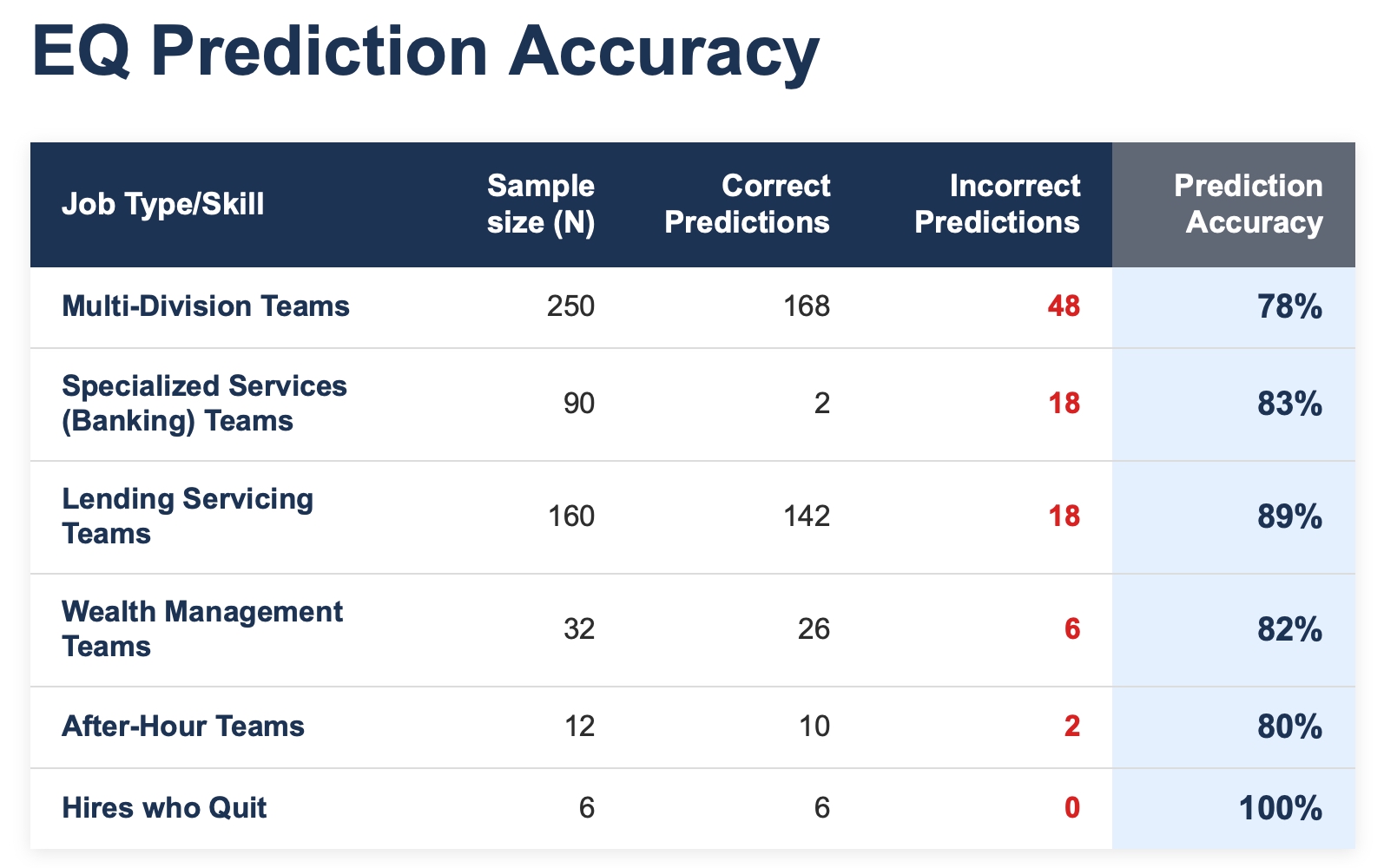
Our EQ-NP assessment demonstrates exceptional predictive power for organizational fit across different sales positions:
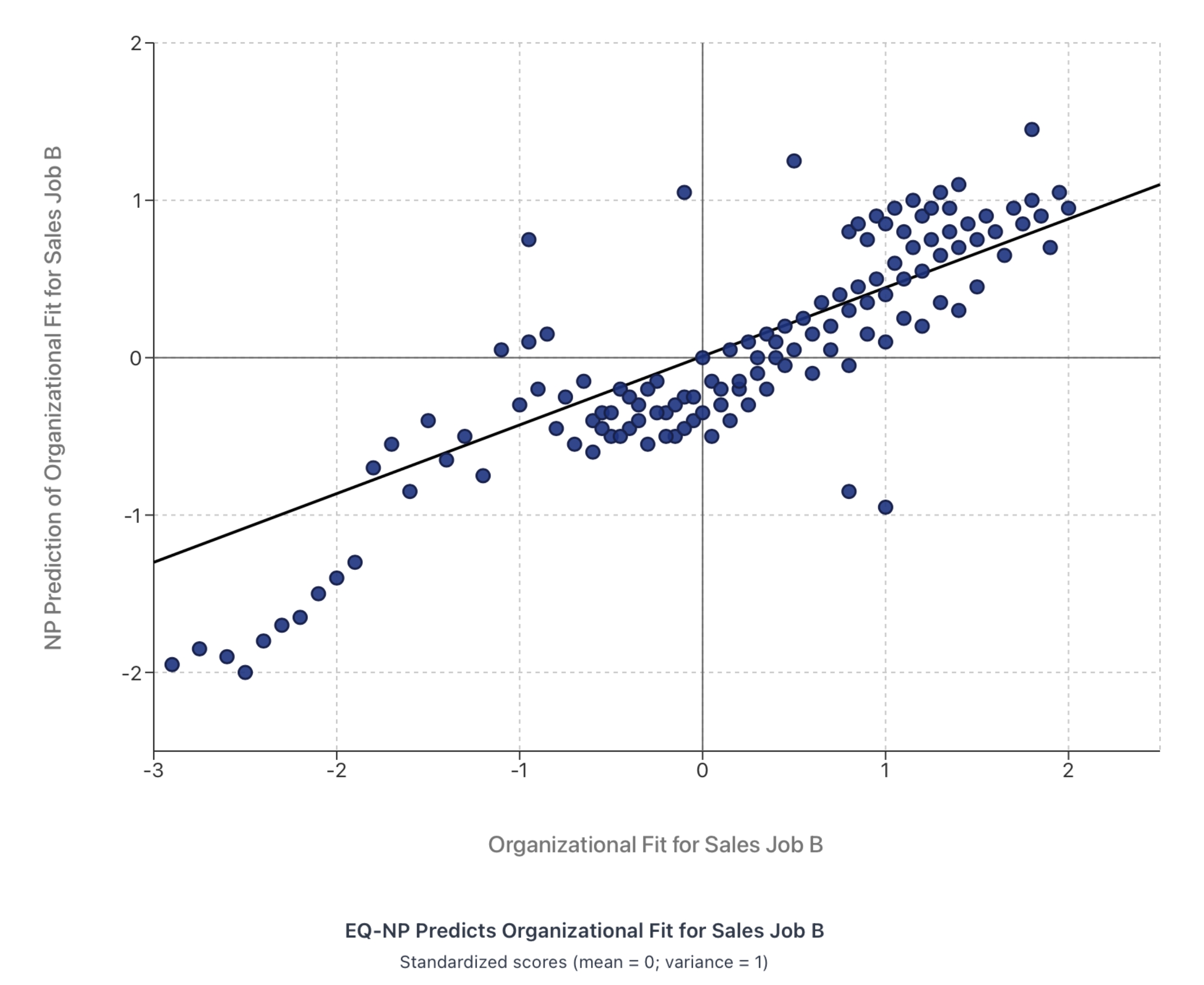
If effort alone determined success, we’d all be our childhood heroes.
Science shows it doesn’t work that way. Potential is not about being anyone; it’s about understanding who you already are and building on the emotional strengths that drive real performance. Behavioral genetics research by Bouchard and McGue (1981) and Plomin et al. (1994) demonstrated that emotional and personality traits remain highly stable throughout adulthood, shaped by strong biological inheritance. Long-term psychology studies by Caspi and Roberts (2001) and Roberts and DelVecchio (2000) showed that personality consistency increases with age, confirming that the way people handle stress, challenge, and leadership tends to remain constant across decades.
Neuroscientific research by Draganski et al. (2004) and Kolb and Gibb (2011) revealed that while neuroplasticity allows the brain to form new connections and learn new skills, these changes are domain-specific. Draganski’s MRI-based study showed structural brain changes (grey matter) following skill learning, indicating neuroplasticity but also suggesting that these structural changes are task-specific and do not imply wholesale changes to emotional architecture. This body of evidence underscores why J-PMC’s model builds on authentic strengths instead of trying to overwrite the foundation nature already set.
Our research demonstrates that EQ profiles can predict how supervisors create supportive team environments. With an R² of 0.80, the EQ model below explains 80% of the difference in how supported employees feel, based solely on the supervisor’s EQ profile. In plain terms, that means four out of five variations in employees’ sense of support can be predicted just by looking at their manager’s emotional intelligence. This level of accuracy is exceptionally high in behavioral science, showing that the EQS is not a vague idea but a measurable, reliable predictor of workplace experience and leadership quality.

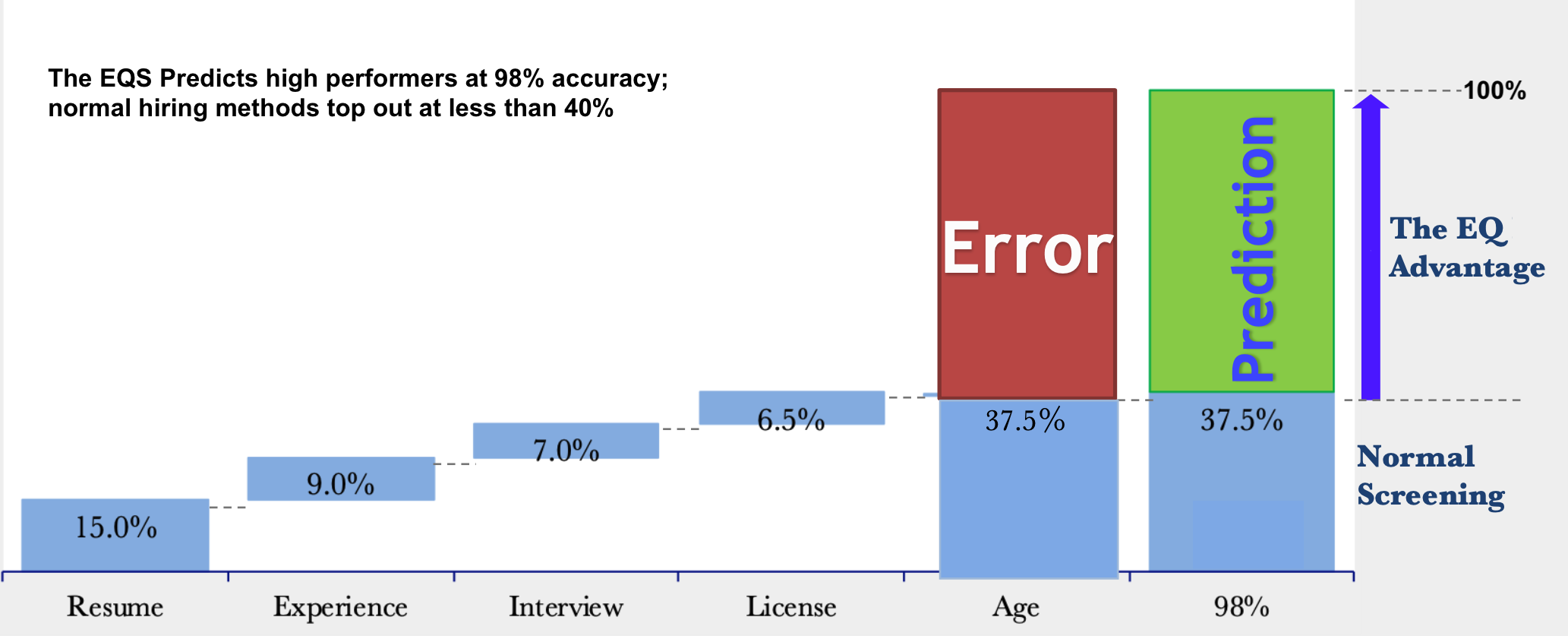
The EQS develops leaders, aligns teams, and sustains post-hiring performance. Validated on 400,000 participants, the EQS can accurately measure emotional-competence factors driving leadership effectiveness.
Based on the same 400,000-person database, the EQS also predicts success in any job where measurable outcomes are available. The EQS can accurately predict high performance in the same classification tiers of concrete outcomes (Gold, Green, Yellow, and Red groupings).
For both leadership and hiring selection, the criteria offer precise, data-driven breakdowns of success probability. Regression analysis identifies which emotional and behavioral factors most strongly predict measurable success by isolating their individual impact while controlling for all other variables.

